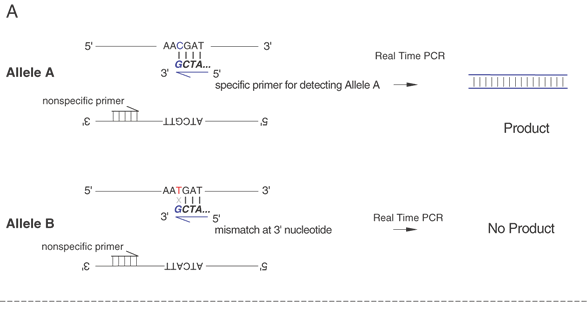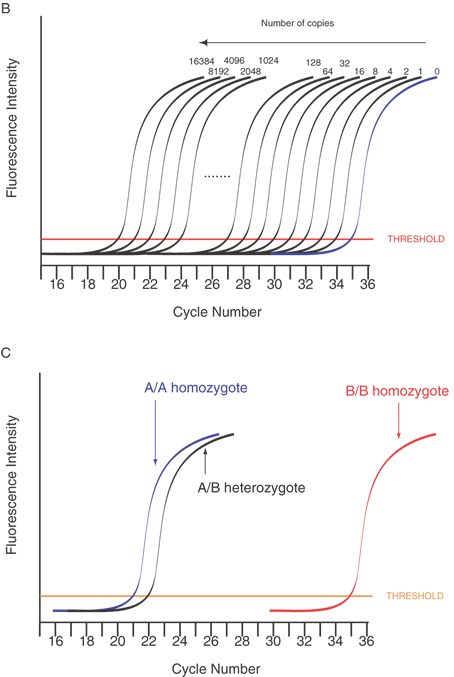



|
| Fig. 14. Allele-specific real-time PCR. Panel A. A single nucleotide mutation can be detected by allele-specific PCR, if the single nucleotide change is known in advance. One of the two primers is chosen so that its 3' nucleotide contains the variant single nucleotide unique to one allele. In this illustration, a single nucleotide change from C to T is the only difference between Allele A and Allele B. The second PCR primer matches sequence at both alleles nearby (usually no more than 150 nucleotides away) and is identified on the figure as the “nonspecific primer.” Because of the one-base mismatch between the Allele A–specific primer and the Allele B sequence, Taq polymerase will not synthesize a new DNA copy. In the Allele A DNA sample, the polymerase efficiently synthesizes a new DNA strand because the 3' base matches this allele perfectly. |